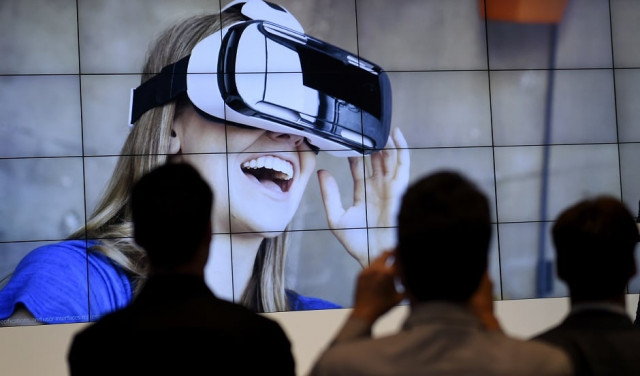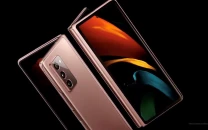Want to watch your favorite shows in VR? One startup aims to make this happen
Littlstar allows brands to upload 360-degree photos or videos in web, mobile and VR formats

Visitors attending a presentation of the virtual reality headset Gear VR. PHOTO: AFP
It’s possible, though. “That’s what the major networks are doing these days,” said Matthew Collado, co-founder and chief content officer at Littlstar. So, what are the barriers?
Facebook's Oculus pushes virtual reality with new gear
There are too many platforms, unlike the app ecosystem which resolves around iOS and Android. An app developer writes one Android app which is available to users of most Android smartphones. As for VR, the Samsung Gear VR, Oculus Rift, HTC Vive, and PlayStation VR all have their own platforms and requirements. This variety of platforms — both in the form of VR hardware and the software behind it — makes content difficult to produce and consume.
This creates a gap in the market that NYC startup Littlstar hopes to fill – by acting like a middleman. Littlstar allows brands to upload 360-degree photos or videos in web, mobile and VR formats, after which it optimizes the content to make it available on VR platforms like Samsung GearVR, Oculus Rift, and Google Cardboard.
The company is also now in the final approval process of signing a partnership with HTC Vive and is launching a presence in Sony PlayStation Store next month, according to Matthew.
Littlstar now has thousands of videos in VR, mobile, and web formats, including content from major networks. The startup bases itself in New York City because of the sheer number of marketing and advertising agencies, as well as TV networks like ABC and HBO, located there.
“I travel in between Los Angeles and New York. New York is more of a business resource hub whereas LA is more for actual production,” Matthew added. Time and budget are additional obstacles to VR production. According to Collado, the VR production budget varies largely based on equipment, deadlines, any specific animation or graphics, and the overall quality requirement. “It could cost US$100,000 or US$1 million,” he said, “and it could be done in four weeks or in two to three months.”
It’s fairly reasonable for any consumer who has spent hundreds of dollars to buy VR hardware to expect high-quality content that is updated on a regular basis.
This might heighten the barriers for brands wanting to invest in VR content. Would you be willing to spend US$50,000 on a VR video with barely acceptable quality which may backfire? Or would you spend several million dollars per episode to retain your audience? Game of Thrones has 10 episodes per season. To make a VR version of that could be quite an investment and nobody knows about the return yet.
Virtual reality helps net last Auschwitz criminals
Currently, Littlstar is free for consumers to watch and for brands to upload content. It received US$5.2 million in series A funding in May this year and has yet to confirm a revenue model. “It could be ad-supported or subscription-based, or a combination of both, like Spotify,” Matthew said. Ultimately, consumers will decide what’s best for them. But that day may still be a long way off.
This article originally appeared on Tech in Asia.



















COMMENTS
Comments are moderated and generally will be posted if they are on-topic and not abusive.
For more information, please see our Comments FAQ